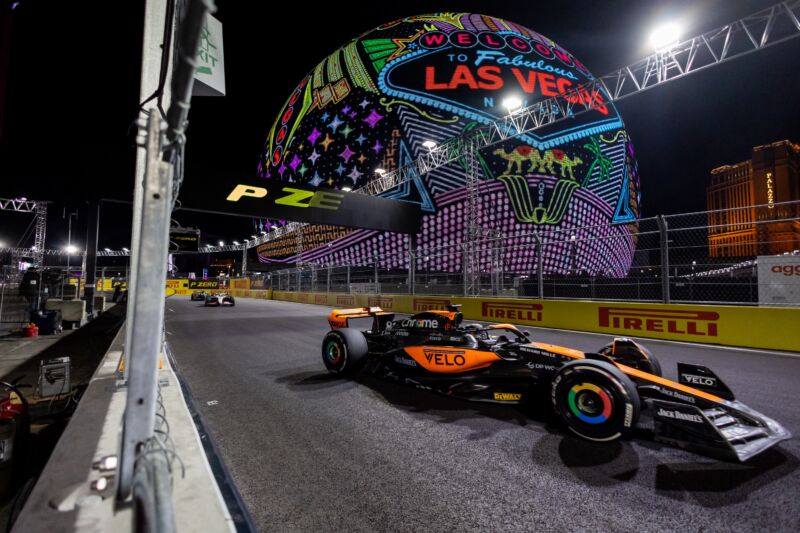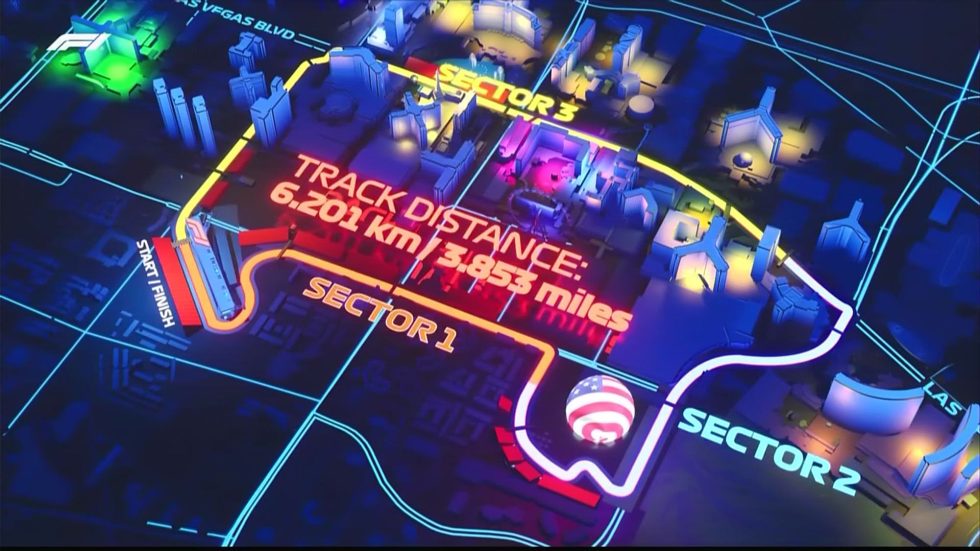
This past weekend, Formula 1 held its inaugural Las Vegas Grand Prix. In many ways, this race was something new and unusual for the racing series, something that created plenty of tension among more traditional fans, many of whom suspected that an abundance of style over substance was at work. Things didn't get much better after the first day's practice, with one car written off and another damaged by poor track preparation. But by the time the checkered flag flew at the end of Saturday night's race, even the skeptics had come around, for the cars didn't just look spectacular on track, they gave us the closest—and one of the most thrilling—race of the year.
The way an F1 event normally works is that a promoter pays the sport a sanctioning fee—somewhere between $20 million and $55 million—and then the sporting circus turns up and races, then leaves. But Liberty Media, which owns F1, decided that it would handle promoting the Las Vegas race itself.
It put plenty of money where its mouth was, too. It built a new permanent pit complex, also housing the fancy Paddock Club hospitality suites, topped off with a massive animated display for a roof. And the 3.8 miles of city streets that made up the track had to be entirely resurfaced with more than 100,000 tons of paving to create the smooth racing surface the sport expects. All in, Liberty spent at least half a billion dollars of its own money on the event.
Advertisement
In return, it promised that the Las Vegas Grand Prix would generate about $1.3 billion for the city. But the weeks leading up to the race saw a steady stream of negative news reports from locals. Setting up any street circuit for the first time involves traffic disruptions, but in Las Vegas that track prep took months and months as roads were prepared, and by race week noses were very out of joint. Locals complained about horrible commute times, and tourists complained that the safety fencing was ruining their view of the gigantic casino buildings. (The ones complaining about the chopped-down palm trees probably had a point.)
Things weren't helped by the ticket prices, which were several times more expensive than at almost any other race on the calendar. Those tickets seemed reasonable compared to the prices being asked for hospitality, which ran to tens or even hundreds of thousands of dollars. This further cemented the impression among many F1 fans that this race wasn't for them.
Then there was the timing. Whether it was a demand from Las Vegas or one from F1, the race was to be a night race, starting at 10 pm local time on Saturday night rather than during the day on Sunday. Great timing for fans in Asia or Australasia, early in the morning for fans in Europe, but the decision had more consequences.

For one thing, the fact that the Nevada desert gets quite cold at night in November came as a surprise to many in the sport, with fears that track temperatures would be too low for the slick rubber tires to grip the track effectively. The mercury didn't drop quite that far, luckily.
For another, it meant that a lengthy delay during Thursday night's practice saw the stands cleared of attendees after the concession workers' and security guards' shifts ended before the second session took to the track.
The delay was necessary, however. Just eight minutes into the first practice session, disaster struck. An F1 car generates massive amounts of downforce (or negative lift) at speed, as the air is channeled over its wings and through the sculpted underfloor. The race car experiences this as a force pushing it down onto the ground—which gives it grip—but the road surface experiences that as suction.
And it was too much suction for an 8-inch water valve cover as Carlos Sainz's Ferrari drove over it. The cover's cement collar holding it into the roadway failed, and the mass of cast iron and cement ripped free and then destroyed the floor of the Ferrari as well as its very expensive hybrid powertrain. (Adding insult to injury, the race stewards were forced to issue Sainz a penalty for having to use a new hybrid battery in his replacement car.)
Advertisement
The session was stopped, and the entire track inspected to see if any of the other water valve covers were at risk for the same thing happening. The second practice session was delayed by 2.5 hours but extended to 90 minutes, albeit with no spectators in person.
Even some of the drivers were unconvinced. Few had anything good to say about the track layout before arriving in Las Vegas, and reigning F1 champion Max Verstappen compared the opening ceremony to The Hunger Games and said he expected it to be "99 percent show and one percent sporting event."
We were wrong
So credit where it's due: F1 and Liberty pulled it off. Thursday might have been a shambolic fiasco, but qualifying on Friday night went smoothly, setting a close grid for Sunday's race. Both Ferraris qualified ahead of Verstappen's Red Bull by some margin, although Sainz would have to start the race mid-pack thanks to his undeserved penalty. And George Russell's Mercedes appeared to have similar speed to the leading Red Bull, at least over a single lap.
Come Saturday night, the grandstands all looked full—a steady decline in ticket prices in the days leading up to the race probably cost resellers, however.

Those fans in attendance and those of us watching on TV were treated to perhaps the best race of the year. Yes, the results make it look like yet another Red Bull win in a season that's had nothing but Red Bull wins other than at Singapore, but the result was not a foregone conclusion. The track layout might not have impressed the drivers as they practiced in their simulators, but there's no denying that it raced extremely well, and if not for a mid-race safety car period, the Ferrari of Charles LeClerc would probably have reached the finish line first.
There was also no denying how cool the whole thing looked. I was expecting little leading up to this weekend, fearing that the Las Vegas Grand Prix would be like Formula E's New York City ePrix races, which delivered mediocre racing and an underwhelming fan experience and existed mainly to allow photographs of the cars with the Statue of Liberty and lower Manhattan's skyscrapers as a backdrop.
AdvertisementBut the sight of the cars running down the long straights at high speed, shooting sparks from their titanium skid blocks, illuminated by the bright hotels and the just-bonkers Sphere looked more like Wipeout or F-Zero than Formula 1, in all the best ways, while still delivering some nail-biting on-track action.

Even the skeptical Verstappen came around, telling the crowd, "I hope everyone enjoyed it a bit. We definitely did. So, yeah, already excited to come back here next year and hopefully we’ll try to do something similar," as he was interviewed on the podium.
The US has seen plenty of street races turn up and fail after a year or two—see the American Le Mans Series in Washington, DC, or IndyCar's Baltimore races as examples. F1 says it has a 10-year contract to race in Las Vegas, and after this weekend I have to imagine there's every chance that happens. And the good news for locals is that at least the next ones won't require months of road work in the run up.



















